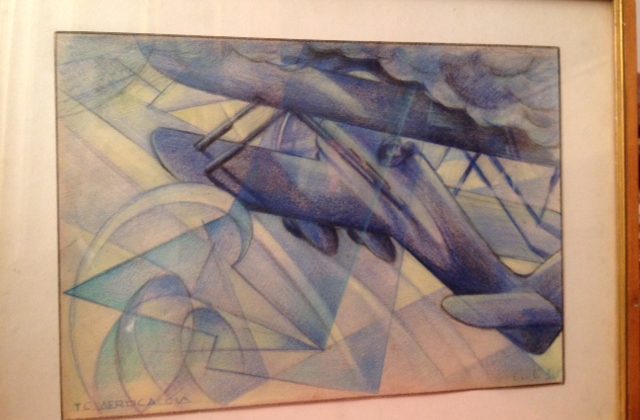Lindsay-Hemenway Syndrome – Case Presentation
Carelli Francesco , Professor for Family Medicine, University of Milan
Ioni Barbara , intern trainee FM , University of Milan
Mesina Marina, neurologist, Milan
A 58 years old male patient of our Practice, without problems in his clinical history, complaining since a few days of cervical pain and gastric symptoms, went by night to the Emergency Room of the nearest Hospital because of sudden onset of vertigo and diplopia mainly in lateral gaze.
He was submitted to some examinations: blood examination showed slight hypocalcaemia, low level of TSH and increased gamma globulins; ECG was normal; Intra cranial AngioTC scan with and without contrast showed no changes in carotid and vertebral vascular district, but thread shaped posterior cerebral arteries, which showed no canalization problems. No alterations in venous opacization of cranial posterior fovea.
The patient was admitted into Neurological Department and Stroke Unit. During his stay in hospital visual disturbances fully recovered into two days, while dizziness during postural changes and sudden head movements were successfully treated by Epley manoeuvre.
Brain and brainstem MRI in T2 and T1 showed no signal alteration.
The patient was discharged with diagnosis of Paroxysmal Postural Benign Vertigo, still complaining of mild dizziness during head movements. He was suggested to avoid sudden head movements and to undergo follow-up visit after 45 days.
After discharge, the patient strictly followed Specialist’s advice, stayed at absolute rest for one week and kept on taking betaistin chloridrate, an anti-vertigo drug, but had difficulties in achieving recovery.
After a time, he came to our Practice, still suffering for residual dizziness symptoms. His implicit request was to find a careful observer, trying not only to treat but also to understand the origin of the disorder, to achieve better recovery. To meet his need we referred him to an
The visit revealed: rightwards tilt while standing with closed eyes (Ronberg manoeuvre), anticlockwise rotation while stepping on place, uncoordinated left stepping with enlarged foothold, spontaneous bilateral first grade nystagmus exhaustible rightwards and not exhaustible leftwards, Nylen changing postural nystagmus and vibratory nystagmus on the left following right para vertebral stimulus.
Thoroughly investigation of clinical history and objective examination allowed to set the symptoms in Lomdsay-Hemenway syndrome, a labyrhynt lesion appearing also with postural signs and symptoms very similar to Paroxysmal Postural Benign Vertigo, for which it must not be mistaken.
Treatment with Acetylsalicylic acid (orally 100 mg/die), Citicholin (1000 mg/die i.m.) and Levosulpride (50 .mg twice a day, morning and evening, for 10 days, then25. mg once a day, at evening for 10 days) is prescribed.
Also some general advice: to drink at least two lt. of liquids a day, to avoid coffee at evening, spicy food, sausages and ham and pork salted meat of any kind, chocolate, tomato and onion, to follow a low sodium high potassium diet, to sleep with 20° lifted head bed, to walk as long as possible.
In about 45 days the patients feels better and is visited for follow up by the Specialist, who finds still mild rightwards tilt at Ronberg manoeuvre, anticlockwise rotation, but valid stepping; spontaneous first grade leftwards nystagmus, no more postural nor vibratory nystagmus.
The syndrome is so in good functional compensation.
Treatment is continued just with ASA and levosulpride at low dose, and Folin and Melatonin are added.
The patient is periodically followed up by the Specialist, but after diagnosis and treatment of the syndrome, his clinical and psychological situation is going better and better up to complete recovery.
THE SYNDROME
Vertigo is the most important and frequent vestibular subjective symptom observed not only by Otorhinolaryngojatrist, but also, and even before, by GPs. Often it is difficult to classify it and make differential diagnosis.
Paroxysmal Postural Benign Vertigo is idiopathic in most cases , while in about 20% of cases its onset is a late result of unilateral peripheral vestibular deficiency based on ischemic distress related to anterior vestibular artery and in these latter cases it may be included in Lindsay- Hemenway Syndrome, so named because of the two U.S. Physicians who first distinguished it. (1).
Internal ear vascularization depends mainly on vertebro-basilar system. This ischemic syndrome is a disease due to necrosis of utricular macula and superior and external semicircular canal. Ischemic necrosis causes at first rotatory vertigo, then degeneration of otholythic macula and accumulation of the otolyths scattered in semicircular canal cupola, showing itself as Paroxysmal Postural Benign Vertigo. Therefore this syndrome shows two different symptomatic periods: the initial one characterized by sudden or progressive onset of vertigo up to cochlear symptoms with decreasing intensity in following weeks, and the following one by paroxysmal postural vertigo or cupololithiasis, which symptoms may last a few weeks and often relapse.
Diagnosis depends on careful history taking, on objective examination looking for postural nystagmus, on clinical follow-up of symptoms evolution (sudden vertigo without deafness evolving into paroxysmal postural vertigo) and unilateral labyrinth hypo-reflectivity or absence of reflectivity. Treatment rests on anti-aggregants, based on the hypothesis of its ischemic origin, and on vestibular rehabilitation manoeuvres.
Difficulties in differential diagnosis of anterior vestibular artery lies on often uncertain anamnesis and above all on the evolution phase in which patient is at the moment of clinical evaluation (2).
Most of the patients often at beginning are treated with sedatives, so they seems at visit just in the acute phase of classical paroxysmal postural benign vertigo, with no possibility to show postural nystagmus.
Lindsay-Hemenway syndrome remains so a rather frequent clinical picture in Otorhinolaryngology consultations, but its incidence is still underestimated and its identification is achieved is often late.
Key words : vertigo – Vestibular pathology – differential diagnosis
Bibliography
1.Lindsay JR-Hemenway WG Arch.Otorynol.1957;65:692-706
2. J.L.Pardal Refoyo-D.Perez Plasencia-L.D.Beltran Mateos Isquemia de la arteria vestibular anterior (syndrome de Lynsday-Hemenway) Acta Otorrinolaring.Esp.49,8 (599-602),1998



